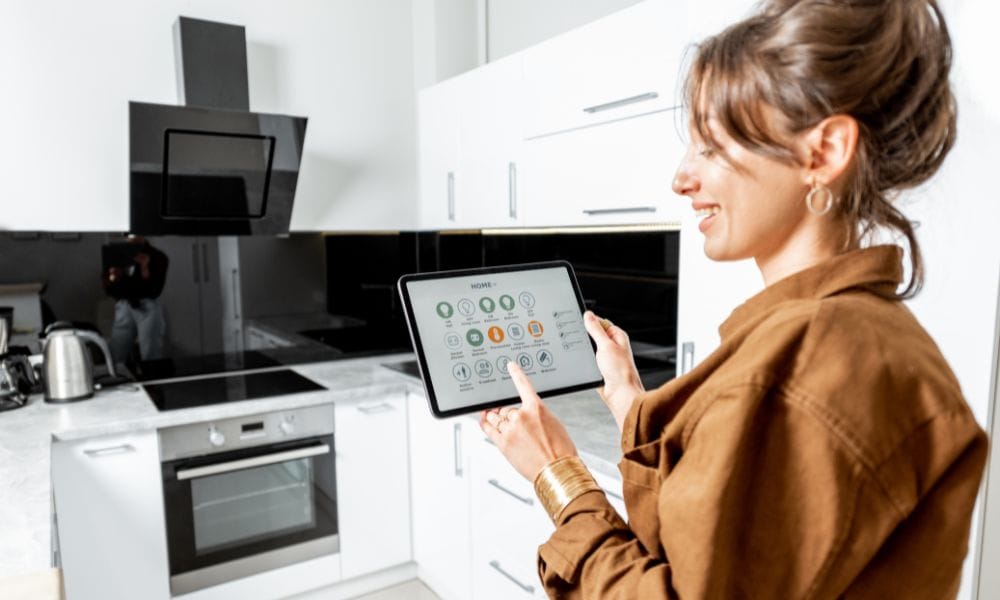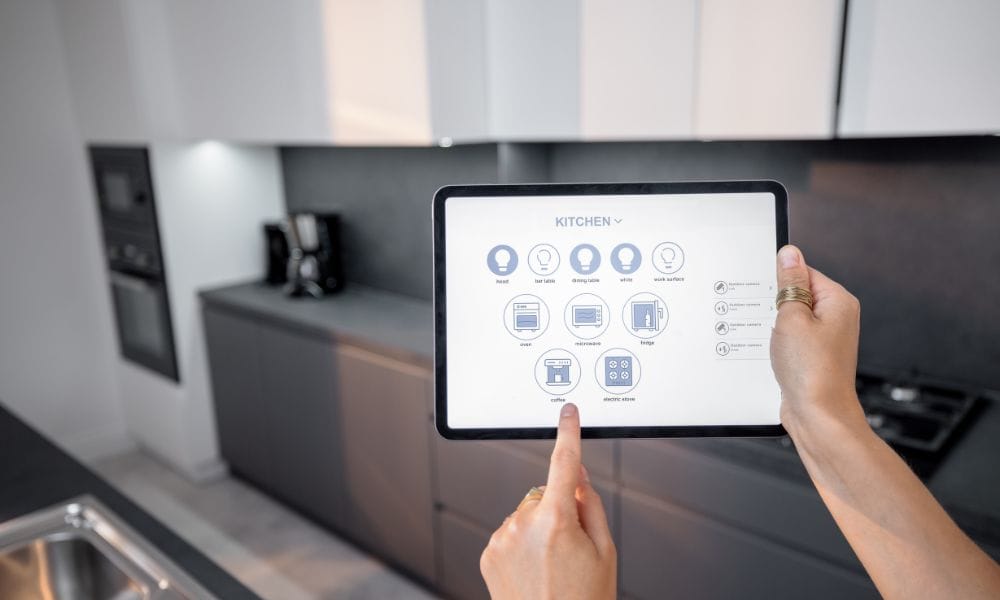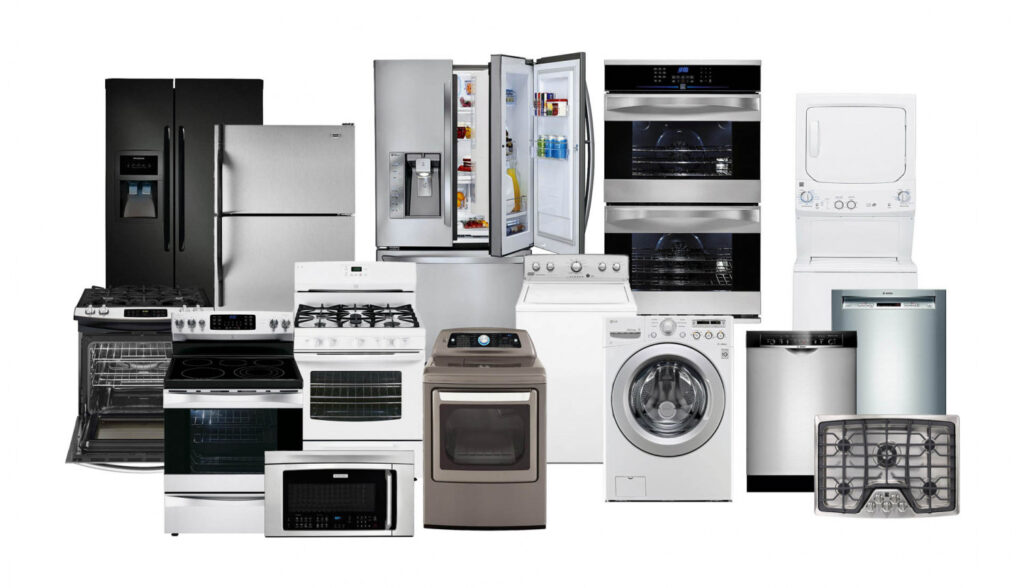
Smart vs Traditional Appliances in 2025: What’s the Real Energy Saver?
The argument for smart versus ordinary appliances is more pertinent than ever in 2025. With energy bills going up and environment-friendliness a concern at home, homeowners find themselves wondering which appliances really cut it. Do you hold onto your trusty old washing machine or upgrade to a smart one that can be controlled from your phone? Is a smart fridge worth all the fuss, or does it really just add bells and whistles? In this blog, we will highlight the energy-saving features of smart and conventional appliances, so that you can choose wisely for your home and the planet.
Choosing between smart vs traditional appliances has become a key decision for homeowners in 2025. As energy efficiency becomes more important, understanding how smart vs traditional appliances perform can help you reduce bills and environmental impact. This blog explores the truth behind smart vs traditional appliances, comparing features, savings, and long-term value.
Learning the Fundamentals: What Does it Mean for an Appliance to be “Smart”?
Let’s first clarify what smart appliances are. A smart appliance has connectivity capabilities (typically Wi-Fi or Bluetooth), sensors, and occasionally AI to support remote control, automation, and energy consumption optimization.
Typical characteristics of smart devices are:
Remote access and management through smartphone apps
Automated cycles according to usage patterns
Maintenance notifications
Smart home system integration (such as Alexa or Google Home)
Instantaneous energy consumption reports
Conventional devices, however, function manually without internet connection or automation. They tend not to have sensors and need more user inputs, but they’re typically less expensive to purchase upfront and easier to fix.
Energy Efficiency: The Core of the Debate
Energy efficiency is the top consideration when comparing Smart vs Traditional Appliances. Let’s break down how they perform in various categories:
1. Refrigerators
Smart: Automatically adjust internal temperatures according to door usage or time of day; alert you if the door has been left open.
Traditional: Fixed temperature, set-and-forget cooling.
Winner: Smart refrigerators conserve energy over time through dynamic optimization.
2. Washing Machines
Smart: Auto-adjust water level, cycle duration, and detergent dosage according to load size.
Traditional: Wasteful of water and electricity in manual cycles.
Winner: Smart washers are smarter by adapting to real needs.
3. Dishwashers
Smart: Autopilot with sensors to adjust water pressure and temperature; auto-start off-peak.
Traditional: Higher water and energy consumption with no automation.
Winner: Smart dishwashers, particularly Energy Star-rated ones.
4. Ovens
Smart: Remote preheat, store favorite recipes, and auto-turn off.
Traditional: Simple cooking functions, no connectivity.
Winner: Smart ovens help save energy by precision cooking and automation.
5. Dryers
Smart: Automatically detect moisture levels and stop cycles.
Traditional: Operate on timers, tending to over-dry clothes.
Winner: Smart dryers that save energy and minimize wear on clothes.

Real-World Scenarios: Comparing Energy Bills
Let’s assume two households:
Household A is equipped with only traditional appliances.
Household B replaced traditional appliances with smart ones within the past 12 months.
Results:
Household A pays an average of $180 per month for electricity.
Household B, through load shifting, autoshutdowns, and energy monitoring, pays $130 per month.
That’s a $600 savings in a year—enough to pay for an upgrade of one or two large appliances.
The Environmental Impact
Saving energy isn’t just good for your wallet. It also has a big effect on your carbon footprint. Smart appliances:
Consume less power during peak periods
Cut emissions by not using extra cycles
Connect with renewable energy systems
Even if you’re not living completely off the grid, these changes add up across thousands of homes, making smart appliances a more eco-friendly choice.
Upfront Costs vs. Long-Term Savings
One of the biggest barriers to smart appliances is the initial cost. Let’s break down the cost comparison:
| Appliance | Traditional Price | Smart Price | Estimated Energy Savings (Annual) |
|---|---|---|---|
| Refrigerator | $600 | $1,200 | $60–$100 |
| Washing Machine | $500 | $1,000 | $50–$80 |
| Dishwasher | $400 | $900 | $40–$70 |
| Oven | $600 | $1,100 | $30–$50 |
| Dryer | $500 | $1,000 | $60–$90 |
While the upfront cost is often double, the savings over 5–10 years—and the added convenience—usually justify the investment.

Common Misconceptions About Smart Appliances
“They’re complicated to use.” Most smart appliances are accompanied by easy-to-use apps and voice control.
“They break more frequently.” In fact, most smart devices provide maintenance notifications, reducing the likelihood of breakdowns.
“They spy on you.” Though concerns exist regarding privacy, the majority of smart appliances gather usage statistics only to enhance efficiency.
“They require ideal Wi-Fi.” Most still operate manually if cut off from the internet.
When to Choose Traditional Appliances
In spite of all the benefits, conventional appliances do have their niche:
If renting or in the process of moving
When on a tight budget
For users who like straightforward, mechanical controls
Where internet connectivity is poor
Tips for Smarter Energy Consumption (Irrespective of Appliance Type)
Disconnect unused appliances to eliminate phantom energy consumption.
Make use of power strips for bulk shut-off.
Regular maintenance such as cleaning filters and coils.
Use off-peak power hours for heavy-load operations.
Educate the family members on energy-saving practices.
Expert Insights about Smart vs Traditional Appliances
Smart appliances provide an unparalled opportunity to cut your energy cost while upgrading home comfort and convenience. They pay for themselves in a few years. Jane Mullins, Home Energy Consultant
Old-fashioned appliances remain valuable in some contexts, particularly for temporary usage or low connectivity locations. Mike Jensen, Appliance Technician.
Compare smart vs traditional appliances based on energy standards through Energy Star’s official comparison resources.
Conclusion about Smart vs Traditional Appliances
In the war of Smart vs Traditional Appliances, smart appliances gain the advantage of energy savings, ease of use, and good for the environment particularly in 2025, with smart technology having become more advanced and affordable. Although conventional models continue to function well in certain cases, investing in smart versions is a smart move for the new-age, energy-aware home.Discover how routine care complements the benefits of smart vs traditional appliances in our appliance maintenance tips guide.
By knowing the strengths of both kinds and developing wiser habits in general, you can pay substantially less for your energy and live a more environmentally friendly lifestyle.
FAQs about Smart vs Traditional Appliances
Q1:Smart vs Traditional Appliances which more costly to fix?
A1: Occasionally, but many include extended warranties and diagnostic software.
Q2: Can smart appliances be used manually?
A2: Yes, most can still operate without connectivity.
Q3: Are smart appliances safe?
A3: They’re generally safe if you update firmware and employ robust passwords.
Q4: Do smart appliances automatically save energy without user intervention?
A4: Yes, most do that automatically based on use.
Q5: Is the energy gap between smart and conventional appliances really that huge?
A5: In the long run, yes particularly when several appliances are retrofitted.



